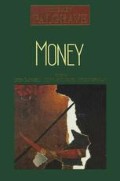Abstract
Full-bodied monies such as gold coin contain metal approximately equal in value to the face value of the coin. Under the gold standard, metal could be brought to the mint and freely coined into gold, less a small seigniorage charge for the privilege. Subsidiary or token coin and paper money by contrast cost much less to produce than their face value. The excess of the face value over the cost of production of currency is also called seigniorage, because it accrued to the seigneur or ruler who issued the currency, in early times.
Access this chapter
Tax calculation will be finalised at checkout
Purchases are for personal use only
Editor information
Copyright information
© 1989 Palgrave Macmillan, a division of Macmillan Publishers Limited
About this chapter
Cite this chapter
Black, S. (1989). Seigniorage. In: Eatwell, J., Milgate, M., Newman, P. (eds) Money. The New Palgrave. Palgrave Macmillan, London. https://doi.org/10.1007/978-1-349-19804-7_39
Download citation
DOI: https://doi.org/10.1007/978-1-349-19804-7_39
Publisher Name: Palgrave Macmillan, London
Print ISBN: 978-0-333-49527-8
Online ISBN: 978-1-349-19804-7
eBook Packages: Palgrave Economics & Finance CollectionEconomics and Finance (R0)

